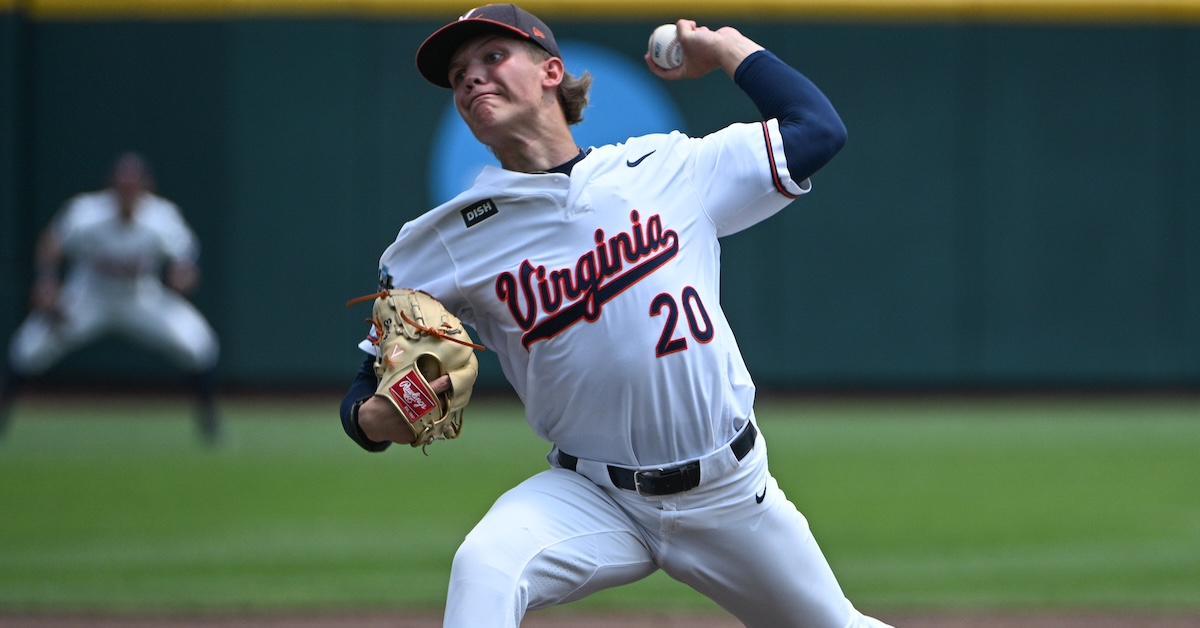Connelly Early Is Opening Eyes in the Red Sox System

Connelly Early has emerged as one of Boston’s best pitching prospects. A fifth-round pick in 2023 out of the University of Virginia — he’d spent his first two collegiate seasons at Army — the 23-year-old left-hander has a 40.4% strikeout rate, a 1.88 ERA, and a 1.73 FIP over six appearances comprising 24 innings with Double-A Portland. Moreover, he’s allowed just 12 hits, none of which have left the yard. Assigned a 35+ FV when our 2024 Red Sox Top Prospects list came out last July, he was recently added to The Board for 2025 and bumped up to a 45+.
Early began opening eyes last summer in his first full professional season. Effectively establishing himself as a sleeper within a well-stocked Red Sox system, the Midlothian, Virginia native threw 103 2/3 innings between his current level and High-A, logging a 3.99 ERA and a 3.24 FIP, as well as a 30.8% strikeout rate that ranked highest among Boston farmhands who threw at least 80 frames. Early did so with both a better understanding of his craft and a revamped repertoire.
“From college, the only same grip I have is my [four-seam] fastball,” Early told me at the onset of the current campaign. “My changeup is completely different. The curveball grip is different. The sweeper is completely new. My cutter/gyro slider is pretty much the same, but I’ve worked a lot more on it this year than I did in college.”
The erstwhile Black-Knight-turned-Cavalier credits the education he’s received in pro ball for much of his success. He “didn’t know too much about all the TrackMan stuff” prior to getting drafted; he simply worked with his coaches, “going through what the desirable pitches were, and trying to differentiate the shapes as much as possible.”
The movement profile of his curveball has changed meaningfully. Last season, he made a grip adjustment that allowed a fringe offering to become a real weapon.
“I wasn’t getting the depth I wanted, so I implemented a spike,” explained Early, whose delivery features a little over 6 1/2 feet of extension. “By getting the index finger out of the way and getting more pressure on my middle finger, I added anywhere from 7-10 inches of depth. I’ve always loved to throw a curveball, so while changing the grip was a little bit weird at first, it was worth the effort. Now I can either flip it in there for a strike or use it as a putaway pitch.”
He made another notable alteration to his arsenal, adding what our lead prospect analyst Eric Longenhagen considers Early’s nastiest pitch. Prior to last season, Early switched from a conventional two-seam circle-changeup grip to a one-seam kick-change. A member of the Red Sox starting rotation who is currently on the IL played a part in that.
“I’d heard the term kick-change, because Richard Fitts was messing around with one,” Early said. “I worked on it with him a little bit, then got with our pitching coordinators and tried it out. It ended up working out.
“I hadn’t even known that it was a realistic possibility for me,” the low-slot southpaw added. “I tend to supinate the ball a little bit better than pronate the ball; I more stay behind it with my wrist. A kick-change helps me kill the vert a little more than a two-seam-oriented changeup.”
Given his arm slot, the aforementioned addition of a sweeper made perfect sense. The most horizontal he’d gotten with it at the time we spoke was “22-23 [inches],” while it more typically broke horizontally in the 15-20 range.
And then there is his heater. The four-seamer, which had a relatively pedestrian 89-91 mph when he toed the slab at UVA, now sits comfortably at 92-94 and flashes higher.
“The velocity has definitely gone up,” said Early, who said he gets anywhere from 15-20 inches of ride on his four-seamer. “That was my big focus during the offseason. I knew that if I was able to get my fastball to tick up in velo, then all of my other pitches would play a little bit better, as well. I think they’re in a pretty good spot now. Hopefully that continues throughout the season.”
So far, so good. Opening more eyes every time he takes the mound, Early is on the verge of becoming a high-profile pitching prospect.
David Laurila grew up in Michigan's Upper Peninsula and now writes about baseball from his home in Cambridge, Mass. He authored the Prospectus Q&A series at Baseball Prospectus from December 2006-May 2011 before being claimed off waivers by FanGraphs. He can be followed on Twitter @DavidLaurilaQA.
Great article, thanks! I love hearing about prospects learning and developing. I’m glad the Red Sox seem to be okay at developing pitching prospects